Since the earliest days of Disneyland, the future has been on the move. The park’s Tomorrowland has been the subject of continuous evolution and reimagining for over six decades! But one thing that’s remained constant in this ever-changing land of the future is its dedication to moving people. Preoccupied with ways to improve living, Walt’s fascination with transportation led to numerous prototypes and experiments that guests could experience firsthand.
Eventually, one of them was bound to be a bust, right?
And that’s the case with a ride so infamous, its life and legacy is practically a rumor. You might not even believe that Disneyland’s Tomorrowland featured a high speed thrill ride racing along its second story… if the abandoned tracks weren’t still looming over the land to this very day… Yes, the Rocket Rods lived and died in a flash, taking down the park’s beloved PeopleMover and inviting in a land-wide redesign recalled as one of Disney’s biggest mistakes ever…
Since our ride along the road to tomorrow will get a little bumpy, it’s best to get our bearings with a flashback to better days, and to the Tomorrowlands of yesteryear that got us here.
And before we head off, remember that you can unlock rare concept art and audio streams in this story, access over 100 Extra Features, and recieve an annual Membership card and postcard art set in the mail by supporting this clickbait-free, in-depth, ad-free theme park storytelling site for as little as $2 / month! Become a Park Lore Member to join the story! Until then, let’s start at the beginning…
Yesterday’s Tomorrow
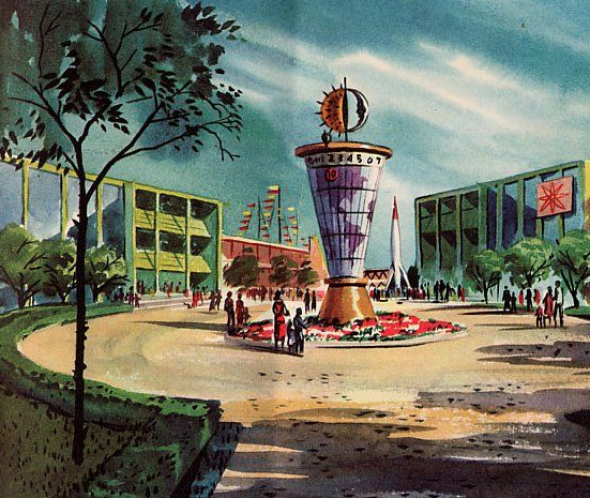
It’s no surprise to readers of our Lost Legends that the Tomorrowland that opened with Disneyland in 1955 wasn’t exactly up to Walt’s standards. Shortchanged by a quick turnaround in the park’s construction and quickly-depleted budget, the land was primarily a corporate showcase. Even when a massive expansion in 1959 simultaneously debuted three of the world’s first “E-Tickets,” Walt knew Tomorrowland was simply not complete.
As the story goes, Walt and his design team at WED Enterprises had always known Tomorrowland was due for a complete, floor-to-ceiling renovation, but it had been backburnered in the early ’60s by WED’s involvement at the 1964-65 New York World’s Fair. it turns out, Walt’s “New Tomorrowland” was worth the wait.
Taking all the advances they’d learned in the ’60s (like Audio-Animatronics, outrageously high-capacity ride systems, and new advances in moving people), the New Tomorrowland that debuted in 1967 was a modern wonder in its own right. Though Walt had passed away before the land’s official opening, his fingerprints were on every square foot of the land.
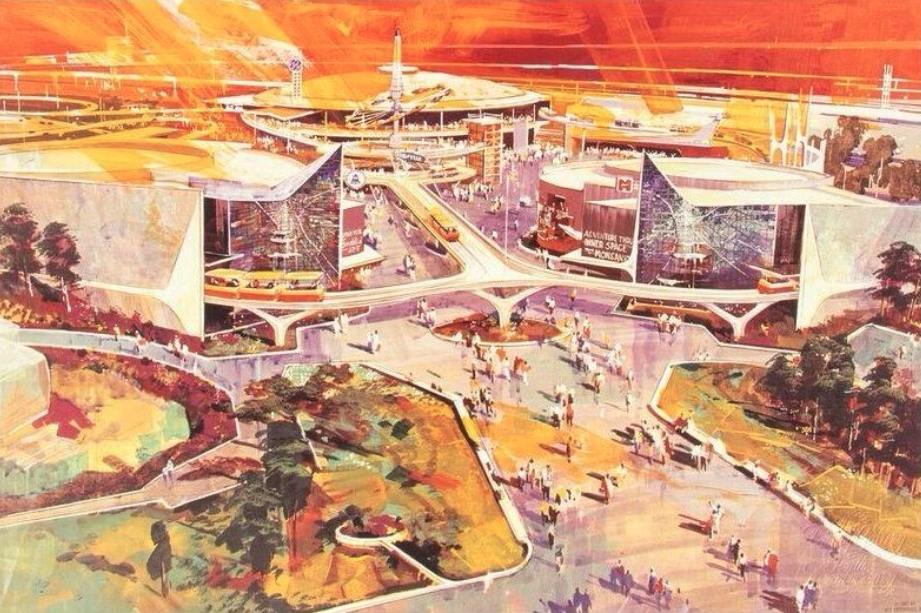
This Space Age paradise of mid-century modern architecture and the wonders of the atom was born straight from the pop culture of the Space Race. Rockets, parabolas, curves, spires, and spacemen all at home in a gleaming, white “World on the Move.”
You have to genuinely imagine what it was like to step into this kinetic, modern world… From its mirrored showbuildings along the entry (housing Circle-Vision 360 and the astounding Lost Legend: Adventure Thru Inner Space, dutifully shrinking guests to the size of an atom), guests would be enveloped in a stylish vision of what tomorrow would feel like.
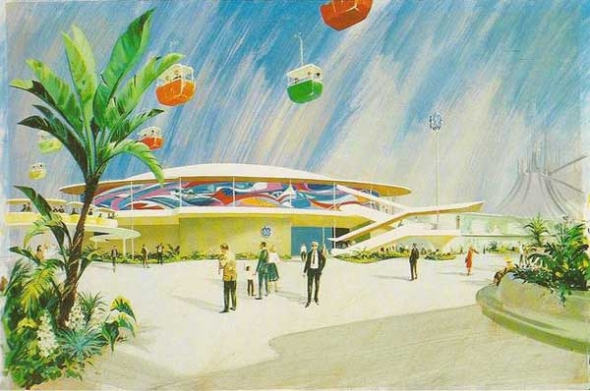
In the land’s core, the spectacular Lost Legend: The Skyway would glide effortlessly over the revolving Modern Marvel: Carousel of Progress (relocated from its initial home at the World’s Fair), sharing its message of hope, optimism, and a “Great, Big, Beautiful Tomorrow” on the horizon.
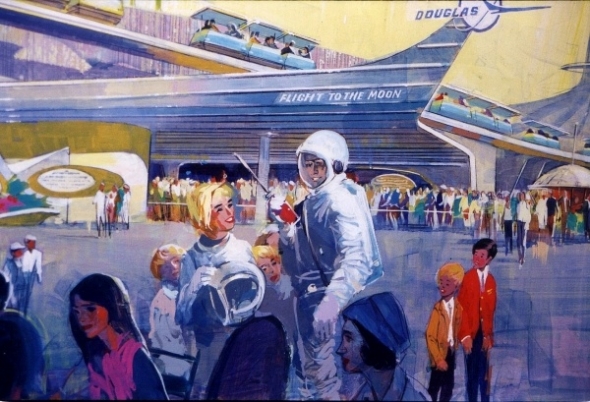
Nearby, the park’s tired Rocket to the Moon was born anew as Flight to the Moon – a theater-in-the-round simulator giving guests the firsthand experience of tomorrow’s commercial flights to the moon, today.
Of course, revolving above it all were the Rocket Jets, with batches of guests carried high up to the third floor of a pedestal in the land’s center in a NASA-red gantry lift, swirling in circle above the Space Age land. But of all the wonders of this New Tomorrowland, one is remembered as the epitome of Walt’s time…
The Highway in the Sky
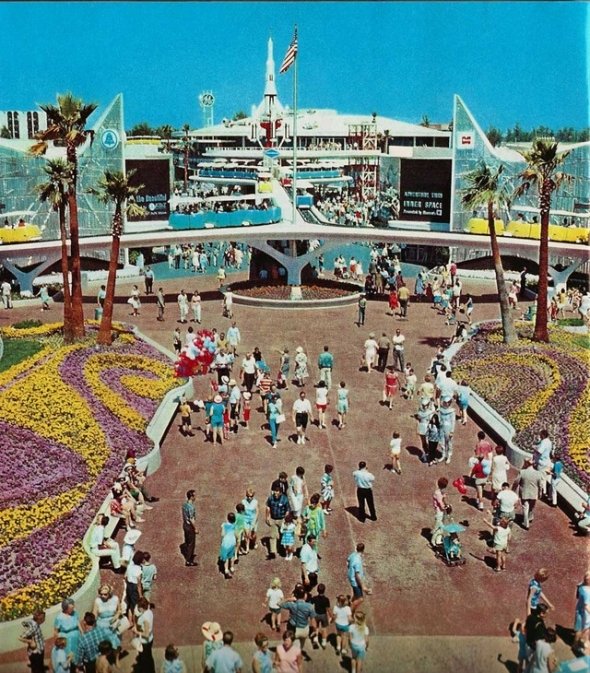
It’s really no surprise that Walt wanted a Tomorrowland he could be proud of. After all, his friend and family tend to agree that above all things, Walt was a futurist. By the end of his life, he’d become fascinated with solutions for tomorrow – solutions he expected to apply in his Experimental Prototype Community of Tomorrow.
One of the greatest remains the PeopleMover. An icon of 1967’s Tomorrowland, the PeopleMover was a high-efficiency, sleek, and stylish installation (cleverly re-using a propulsion technology tested in a very different shell at the World’s Fair – as the bones of the Magic Skyway for auto giant Ford).
In fact, the PeopleMover’s pathway – criss-crossing through the land’s showbuildings and around the forested expanse of the Autopia and Submarine Lagoon – was meant as a demonstration of the technology’s urban application, becoming a public transit model.
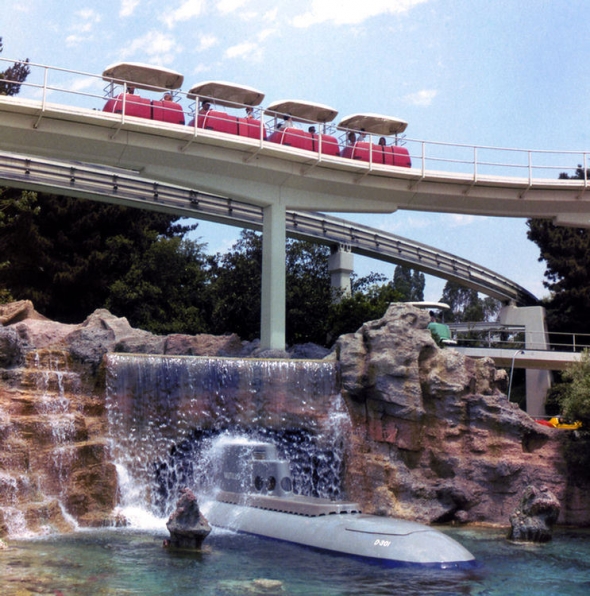
Guests’ leisurely sixteen-minute, 7 mile-per-hour tour along the “highway in the sky” quickly became a fan-favorite for generations of Disneyland’s local guests. Its pastel cabs – darting to-and-fro –gave riders up-close, inside peeks at Adventure Thru Inner Space, CircleVision, and, eventually the distant galaxies of Space Mountain.
Passing through the upper level of the Carousel Theater, guests would even get a stunning view of the tremendous model Imagineers had designed for Walt’s Progress City. The PeopleMover added not only life and movement to the energized Tomorrowland, but capacity, easily eating through crowds and soaking up guests in its breezy aerial tour.
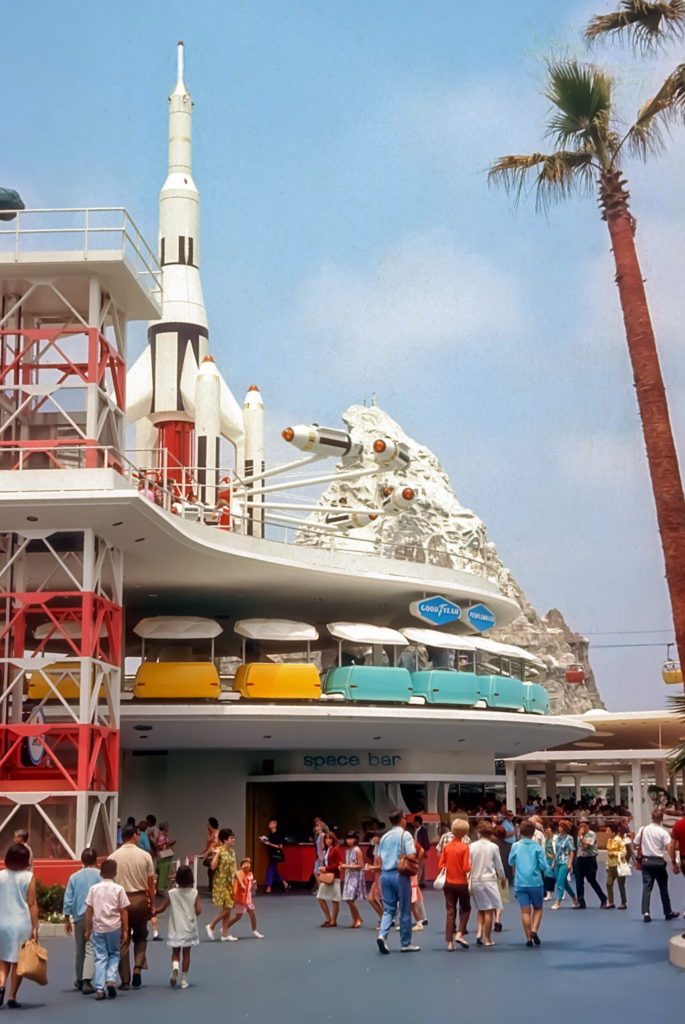
The gentle, functional, whimsical, narrated trip was an absolute wonder and an epitome of Walt’s hopes for Tomorrowland, adaptable to any style that the land may evolve into. It was timeless in that very particular way that made it an understated but beloved element of Disneyland’s ride lineup.
So outstanding was the PeopleMover, it earned it own in-depth feature – Lost Legends: The PeopleMover – that’s a must-read for Disney Parks fans, acting as a prequel to today’s more disappointingly disastrous story. Unfortunately, the PeopleMover is part of our Lost Legends series because it’s gone. It was doomed to be replaced by what might be the most embarrassing attraction Disney’s ever dealt with… We’re officially on the road to the Rocket Rods.
Tomorrow’s trajectory
Unfortunately, we now come face-to-face with another prologue shared by many of our in-depth stories: the “Tomorrowland Problem.” There’s just no escaping it. No matter how hard Disney Imagineers try, tomorrow is always changing. It’s not just that the technologies, sciences, and headlines are always changing (for example, necessitating Flight to the Moon switch to Mission to Mars in 1975 after the real moon landing). It’s that “tomorrow” as a concept is shaped by our collective consciousness; shared pop culture.
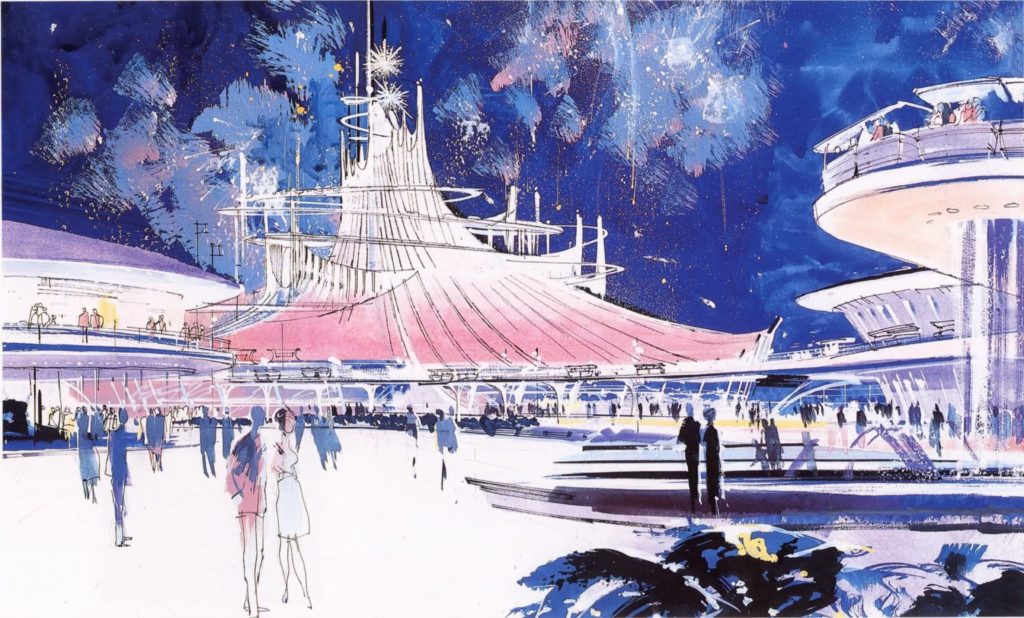
Yes, in Walt’s time, “tomorrow” looked like the Space Age: swirling NASA rockets, pastel PeopleMovers, and the optimistic naievete of how space travel and atomic power had changed the world. But a decade later? Two decades later?
By the 1980s, “tomorrow” looked very different. The remains of Walt’s Tomorrowland looked like tired remnants of a time distant enough to be outdated, but recent enough to be not be retro-cool or nostalgic. Instead, films and pop culture of the ’70s and ’80s had redefined the future. From Alien to Blade Runner; Predator to Star Wars, humanity faced a very different image of tomorrow: a war-torn world plagued by pollution, overpopulation, steaming spaceships, evil empires, and alien creatures.
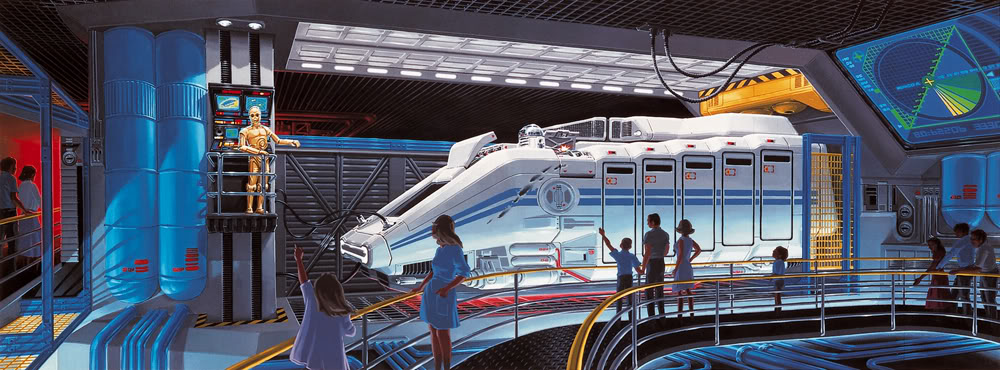
Then, in 1987, Adventure Thru Inner Space closed forever after a two-decade run. Its replacement was the Lost Legend: STAR TOURS. Commissioned by then-new CEO Michael Eisner and his “Ride the Movies” mantra, the high-thrill race through the Star Wars universe singlehandedly kicked off the Age of the Simulator… and signaled a potential new solution for the “Tomorrowland Problem.”
It was time for Tomorrowland to change again. But executives allegedly had a challenge to Imagineers… Rather than merely trying to catch Tomorrowland up to an ever-moving goal post, could they design a Tomorrowland that would never need updated again? One that would leave actual science and architecture behind in favor of an evergreen look? A timeless Tomorrowland? Hmm…


